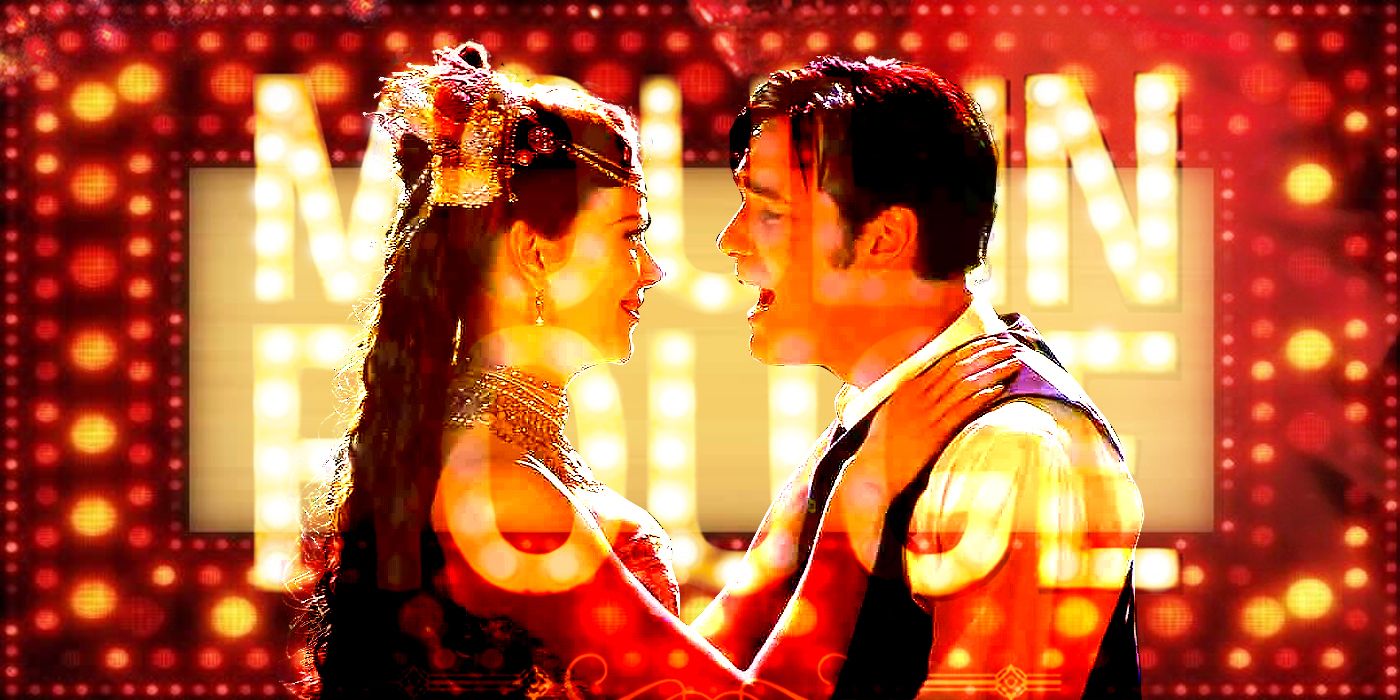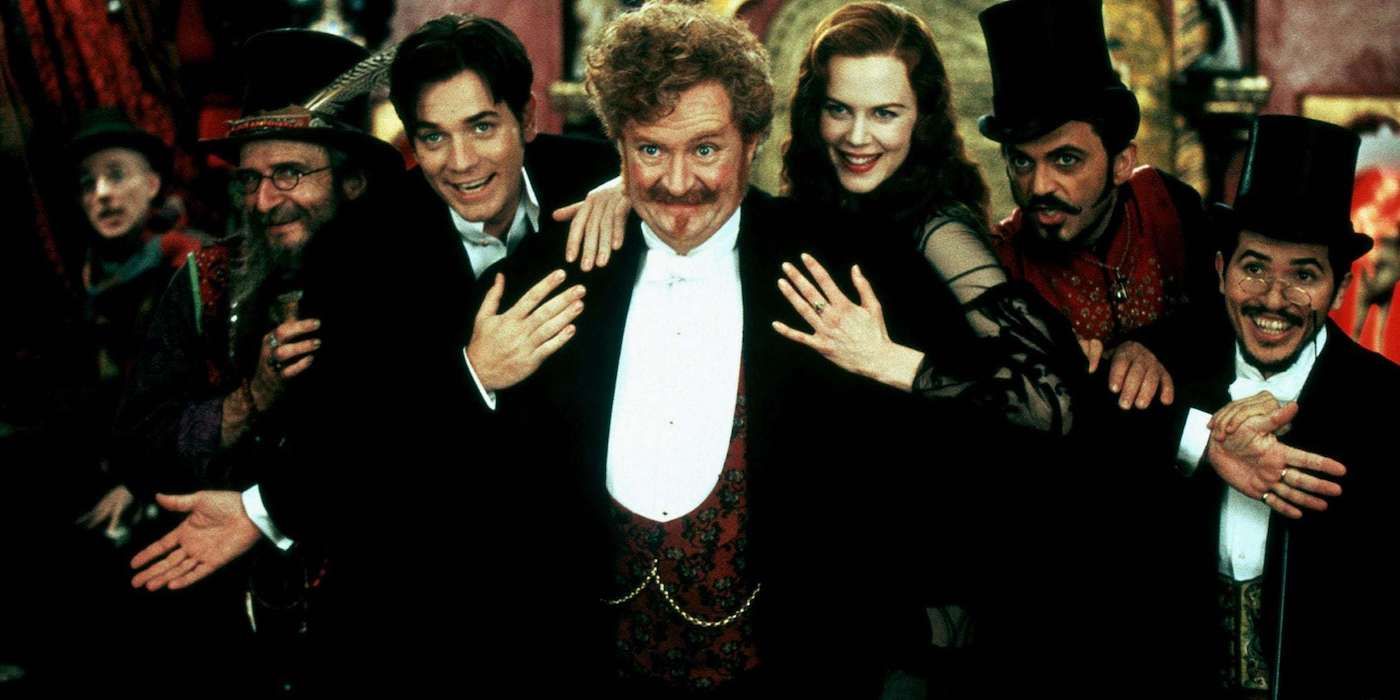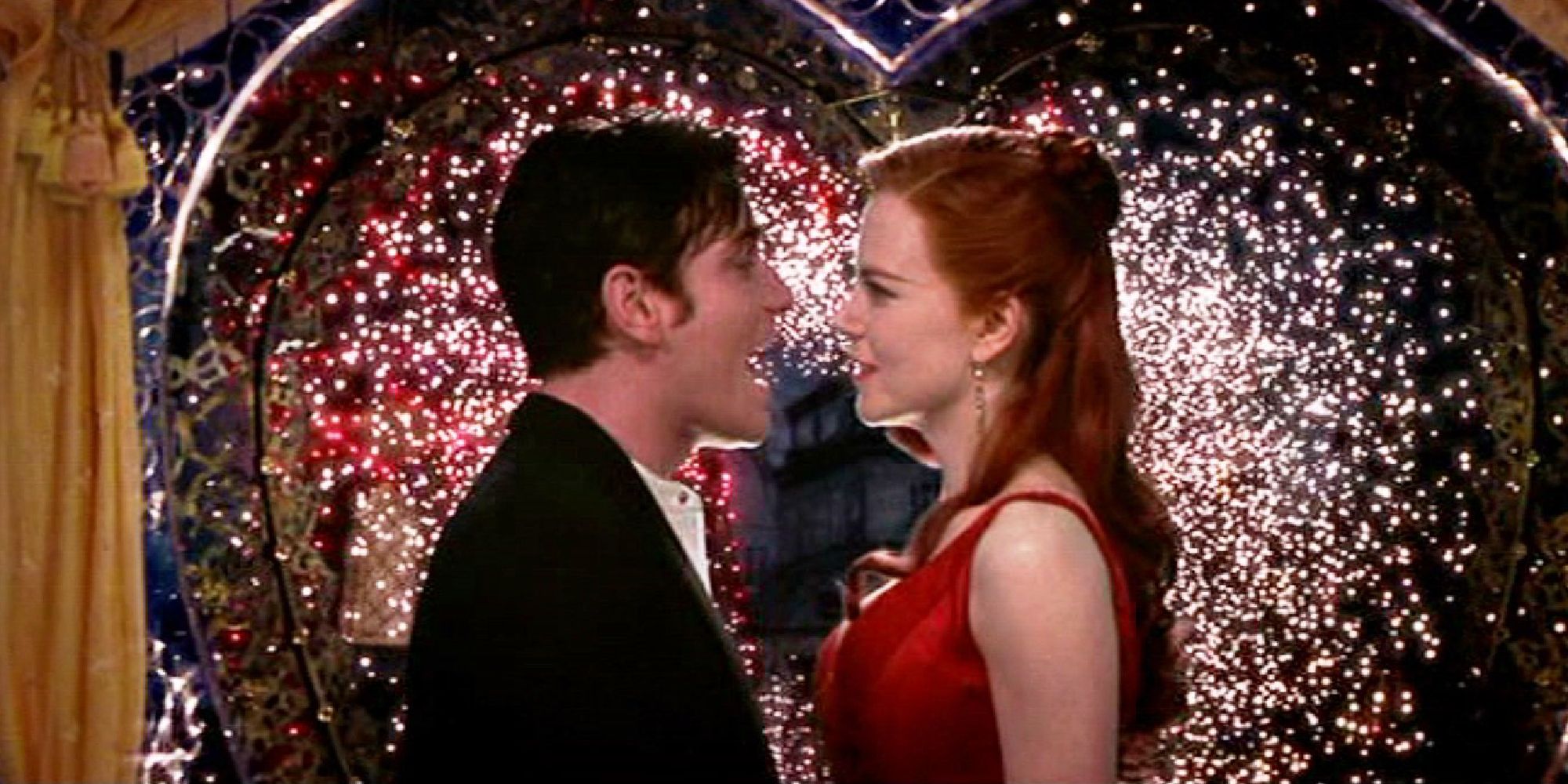Baz Luhrmann is known for the hyperactive pacing and zany tone he works into each of his films. Elvis, which hit theaters last summer, utilized Luhrmann's unique editing style and immersive camera technique -- along with an award-winning performance from Austin Butler -- to separate itself from more traditional musician biopics like Bohemian Rhapsody and I Wanna Dance With Somebody. Luhrmann's style, however, has never been as perfect as it was in his 2001 cult classic, Moulin Rouge! The anachronistic musical drama uses the Luhrmann excess to enhance the movie's themes of love and desire. The organic way the maximalist style and themes run together to tell the story, combined with the bohemian dialogue and meaningful imagery are what make Moulin Rouge! Baz Luhrmann's magnum opus.
'Moulin Rouge!' Is About Truth, Beauty, Freedom, Love... and Lots of It!
Luhrmann began leaning into excessive filmmaking early in his career. Romeo + Juliet and Strictly Ballroom distinguished Luhrmann in Hollywood as a master of over-the-top direction and acting, with a keen ability to draw authenticity from the excess. His early work also meshed thematically, all tackling the concept of true love versus lust. The key word behind Luhrmann's films is "passion." Everything in a Baz Luhrmann film that feels extreme exists because it derives from things that people are extremely passionate about. The heightened emotion, pace, and dialogue may be expressing a character's euphoria, panic, anger, or desire. Because of this, Luhrmann's films stray from grounded realism which might be present in a Martin Scorsese or Paul Thomas Anderson film. Instead, Luhrmann embraces the wackiness and uses it to fuel the emotion, pace, and editing of his movies. Romeo + Juliet and Strictly Ballroom provided the director with an opportunity to use his style to explore the theme of true love. Moulin Rouge! became an opportunity to obsess over it.
Moulin Rouge! is romantic in every sense of the word. The movie takes place from the perspective of the bohemian, Christian (Ewan McGregor), who is disclosing the story of how he fell in love with a Moulin Rouge can-can dancer name Satine (Nicole Kidman). On one end, the movie highlights their love story and all the triumphs and trifles that accompany their desires and the situation they find themselves in. On the other end, Moulin Rouge! romanticizes the life of the penniless bohemian, struggling to find ways to share his art with the world. Luhrmann's style is crucial to the story because it breaks down the cognitive bridge for the audience between the image that the narrator is painting, and the actual events of the story. Christian, who is telling the story, wants the audience to know what happened, but also wants the story to be told in a way that establishes pure empathy and understanding between him and the audience and endears them to the bohemian ideals of truth, beauty, freedom, and love. His instinctive naïveté influences simple and direct personalities and objectives from all the characters, his bohemian nature poeticizes the details of the story, and his unrelenting passion heightens the stakes to the moon.
Baz Luhrmann Brings Poetry to Life in 'Moulin Rouge!'
Speaking of the moon, one key moment that demonstrates how Moulin Rouge! is the pinnacle of the Baz Luhrmann style features the moon suddenly gaining sentience and singing opera to help Christian recite poetry to Satine. On paper, that sounds ridiculous, and out of context, it looks ridiculous! The reality is, the decision to put a goofy face on the moon and have him sing his heart out with Christian was a stroke of genius. The deeper Christian gets into the song, the more expressive he becomes, and the more he falls in love with Satine. Coming from a romantic bohemian, a passionate duet with the moon is a perfect bit of poetic imagery to convey Christian's elation. This is crucial because it employs every technical device Luhrmann is known for and gives it meaningful motivation. Christian chooses to tell the story in this specific way because, in his mind, the moon is as romantic as he is. The genesis of love under a romantic full moon implies the presence of divine intervention and approval. It serves as evidence that it is in fact "true" love. Luhrmann is presenting a literal, visual depiction of poetry.
'Moulin Rouge's Soundtrack Plays a Pivotal Part in Telling the Story
The thematic context of Moulin Rouge! demands that it be a jukebox musical. It's significant that almost all the songs and a large portion of the dialogue come from the bohemians and poets (songwriters) of the last century. The thematic fuel for the movie is a line from the infamous song "Nature Boy," by Nat King Cole: "The greatest thing you'll ever learn is just to love and be loved in return." Moulin Rouge! opens and closes with this idea, which Christian is wrestling with over course of the movie. His whole philosophy - the impetus for becoming a writer in the first place - is centered on this idea that true love is the greatest thing in the world. Even in the moments where Christian is questioning whether that is true, "Nature Boy" has a looming presence that motivates, informs, and haunts.
Pop songs are also used to communicate pivotal moments in the love story between Satine and Christian. "Your Song" by Elton John and "Roxanne" by The Police make significant appearances for different stages of their relationship. "Your Song" is revisited throughout the movie as the couple grows more intimate. "Roxanne" - or as it's known in the film, "El Tango de Roxanne" - shows up as the two lovers are forced to make critical decisions that could lead to the end of their relationship. Moulin Rouge! does, however, feature one love song that is entirely original, made specifically for the movie. The song titled "Come What May" represents Christian and Satine's resolution to give themselves over to true love no matter what trials or tribulations they face. Luhrmann's decision to make this an original song is key because it represents his own bohemian contribution to the artistic discussion on love.
Moulin Rouge! stands today as Baz Luhrmann's maximalist magnum opus because of the way it utilizes his heightened style and his love for music to make a passionate contribution to what he considers "the greatest thing you'll ever learn." The movie gains thematic power from its obsessive nature, its bohemian romanticism, and the way it incorporates modern music about love into the story, the character development, and the dialogue. While Baz Luhrmann continues to find ways to utilize his unique style in his movies, it's likely he won't ever get back to the level of thematic genius behind Moulin Rouge!.



